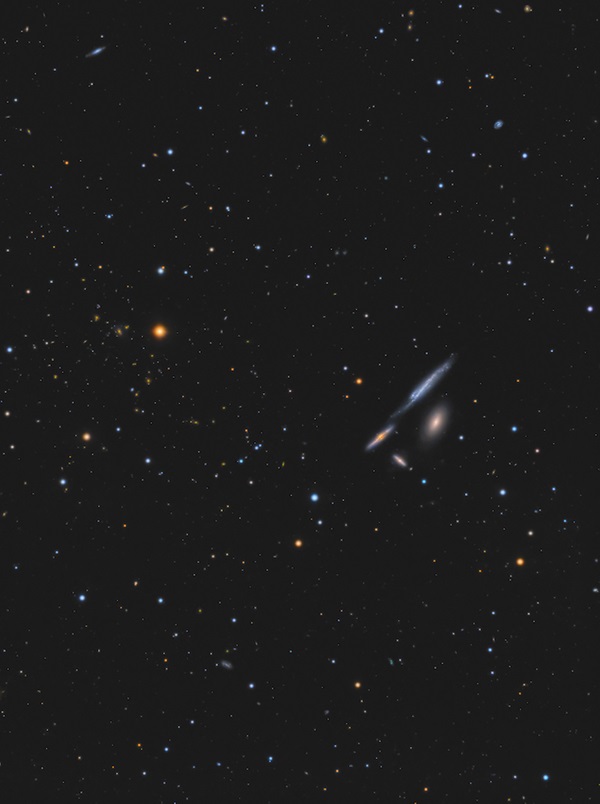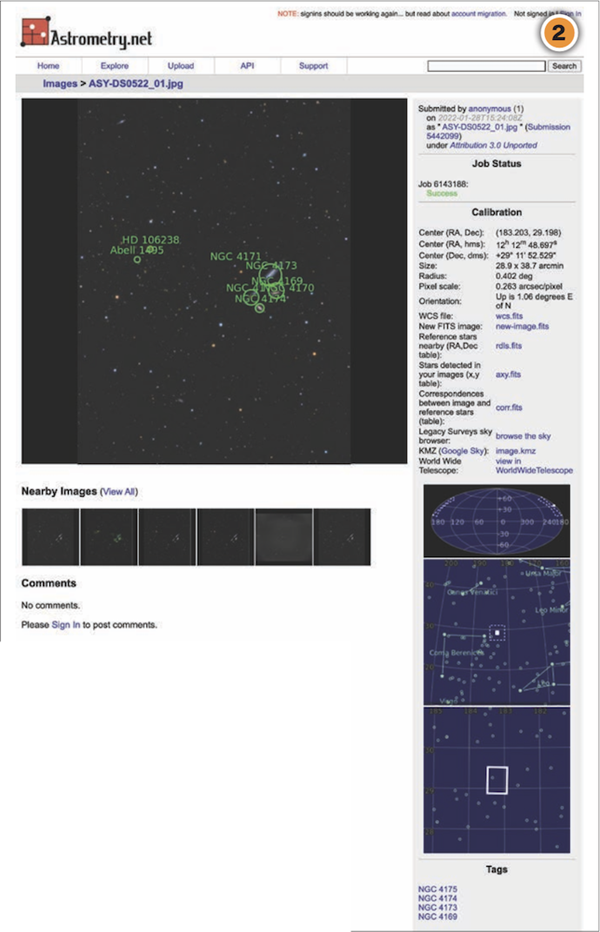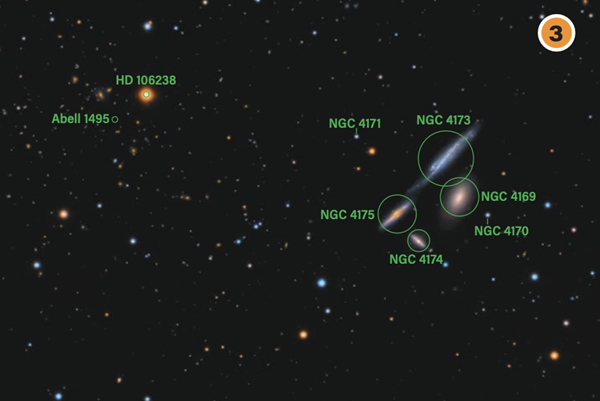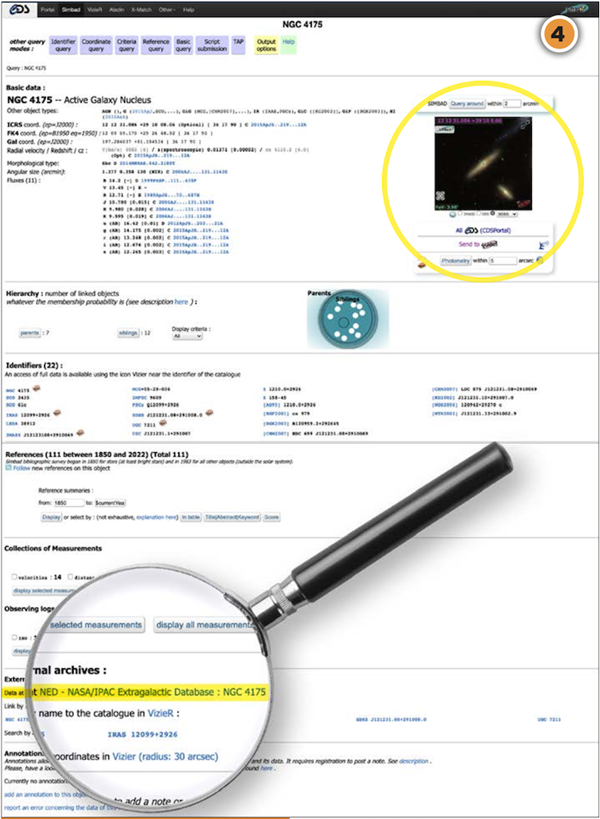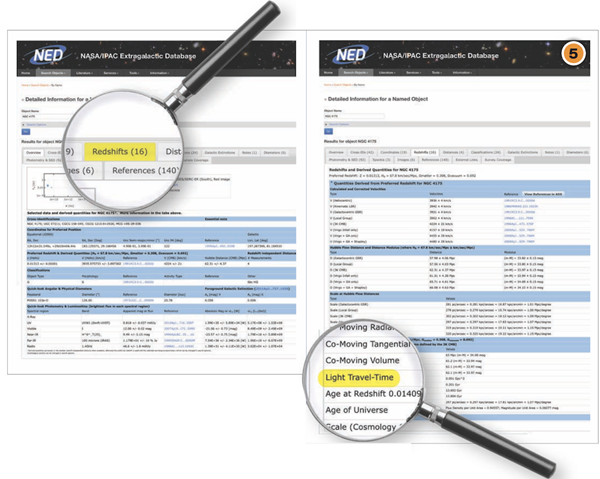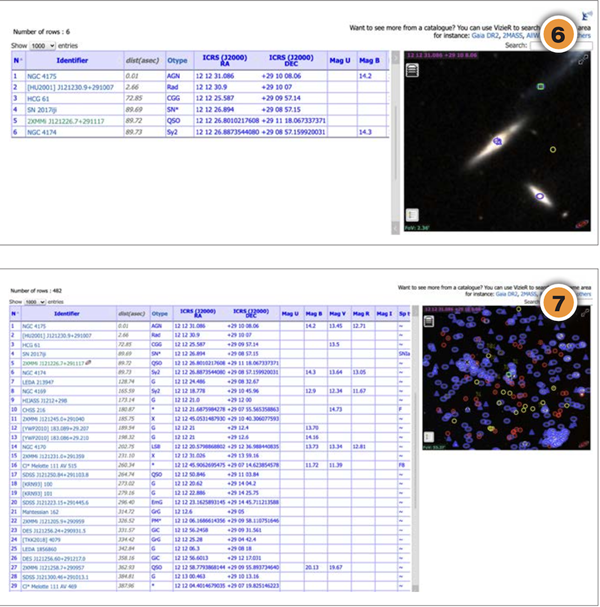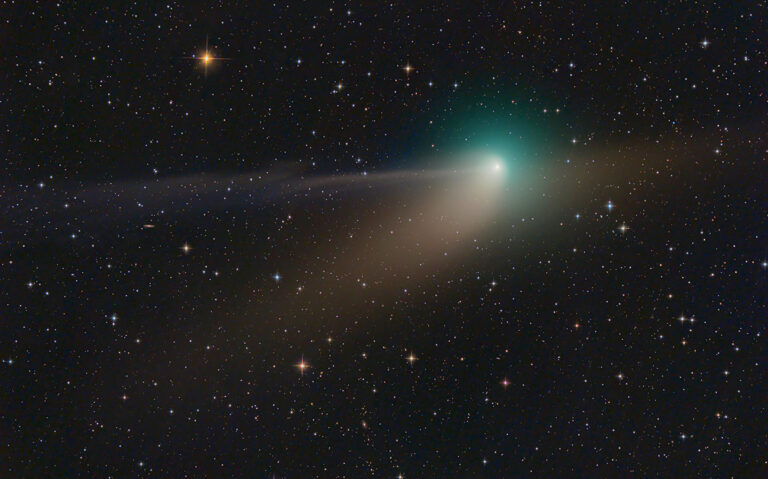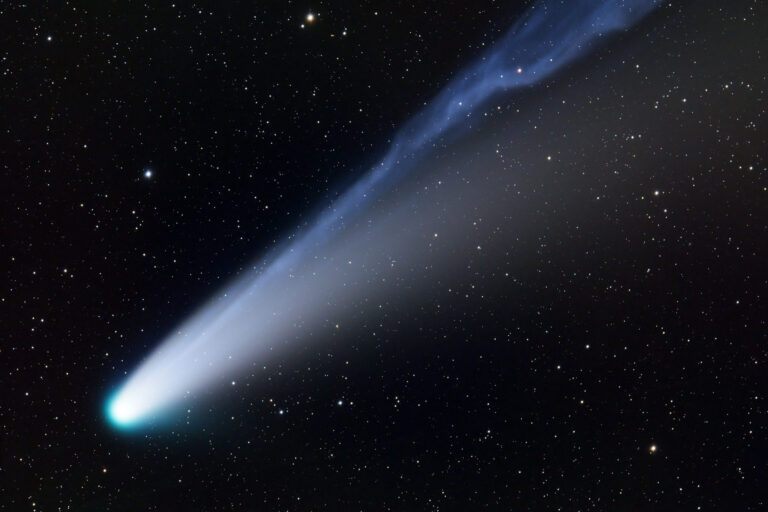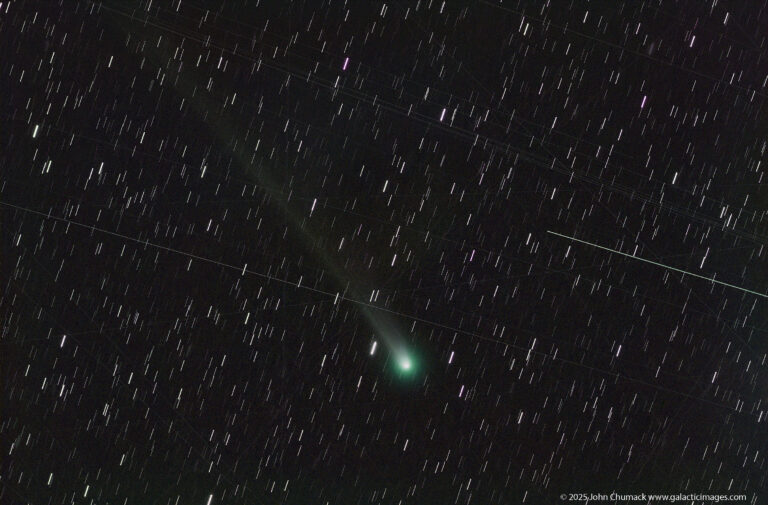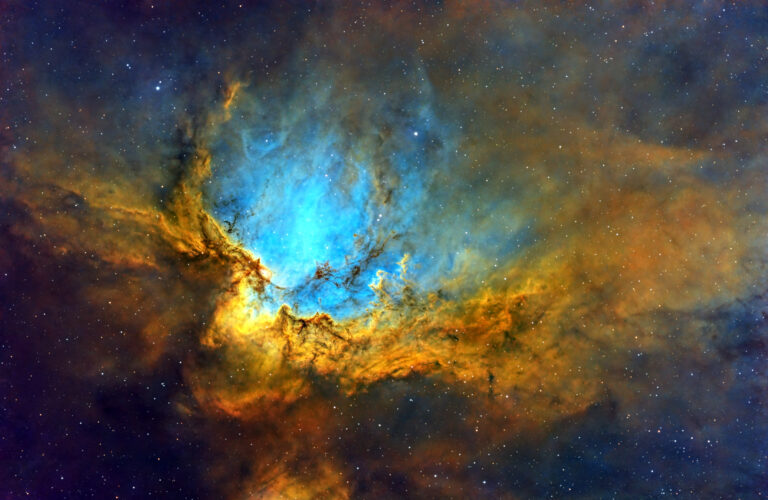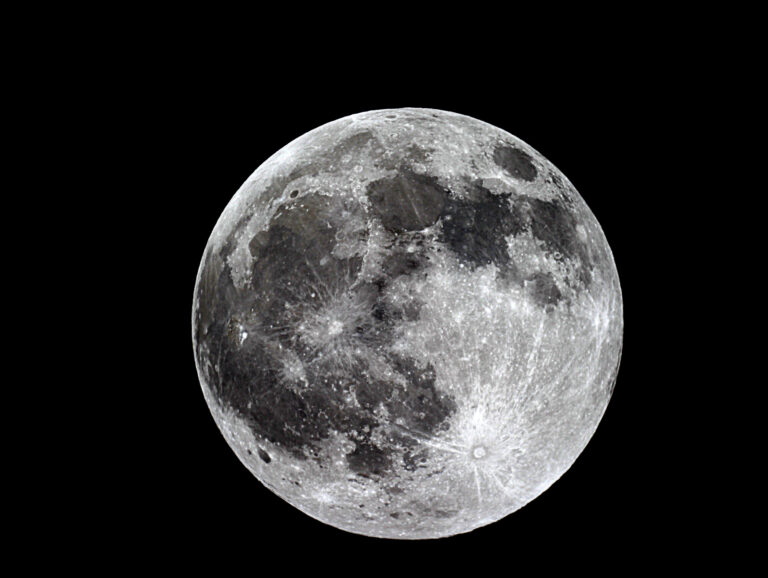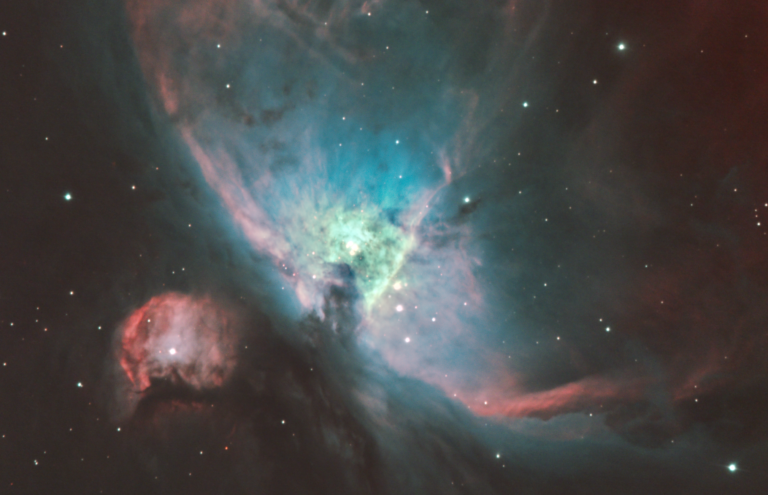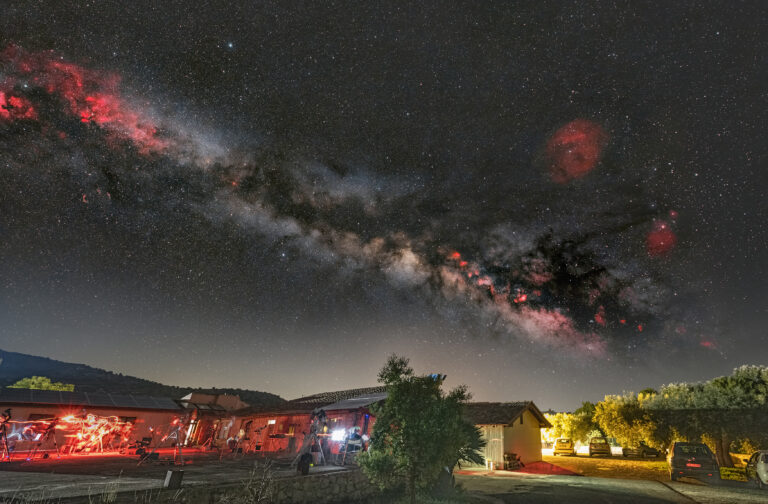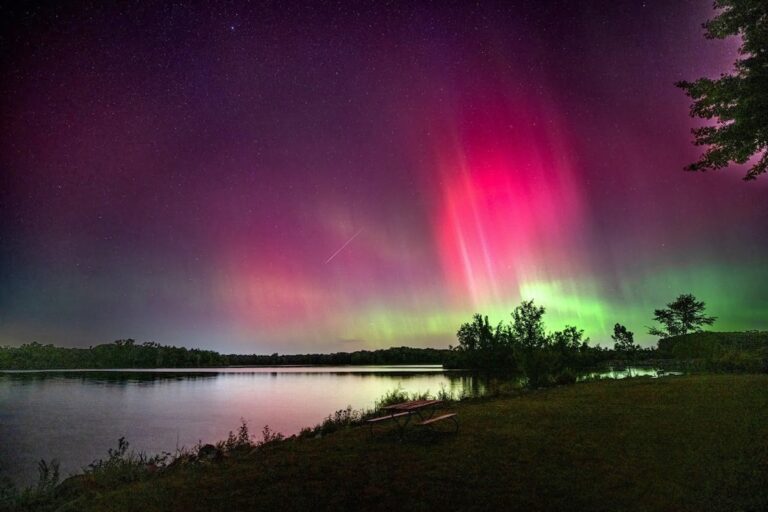Key Takeaways:
- Upload astronomical images to Astrometry.net to identify objects.
- Use SIMBAD to find object properties and links to other databases.
- Explore Aladin to visualize and investigate surrounding objects.
- Use NED for additional information on distant objects.
An astrophotographer is like a tour guide of the cosmos. In the blink of an eye, we can take viewers thousands of light-years away, drawing their attention to the best celestial sights the universe has to offer.
As an astrophotographer who particularly enjoys imaging distant galaxies, I’m often left scanning deep-sky shots, wondering about all the objects clearly captured in my image and what “faint fuzzies” may be lurking in the background. Long exposures allow even a backyard astronomer to capture some of the most distant objects in the universe. And, unlike guiding visitors through a city, its impossible to memorize every single worthwhile object that your images may catch. Unless you already know how to separate fainter objects from the background for further investigation, it may seem hopeless to even identify them all. Thankfully, with just a few mouse clicks, these answers are within reach.
The self-guided tour
Truth be told, there are countless ways to survey an image and identify objects within the field. But I find the methods I outline here to be both quick and easy, no matter your experience level. Diving deep into the cosmos like this allows you to explore the vastness of the universe around us, glimpsing places that human eyes rarely poke around. By following my crash course, as laid out here, you’ll soon be a pro at identifying even the most distant objects.
The best way to understand my process is to start with an example: the image shown on the next page. Some of you may recognize the main objects already in this image, but, for this demonstration, let’s assume that we have no idea what they are.
First, we upload the image to https://nova.astrometry.net. This website accepts any astronomical image and finds its place on the cosmic map. It calculates the celestial coordinates, complete with a graphically annotated image of the objects in the field. Navigate to the Upload tab at the top of the page, upload the image, and wait for Astrometry.net to return the results, which can take a few moments. Then click “go to results page” beside your newly uploaded image. (See images 2 and 3.)
From here, you can investigate any of the objects in the SIMBAD astronomical database. But let’s pick NGC 4175. (If you run into a case where Astrometry.net does not yield any searchable objects in your image, you can still query the galactic coordinates it provides in SIMBAD.)
The tools and process
The best part about these websites is that they require no additional software, are free to use, and, with a little work, can become second nature to you.
Astrometry.net
SIMBAD (Set of Identifications, Measurements, and Bibliography for Astronomical Data)
Aladin Sky Atlas
NED (NASA/IPAC Extragalactic Database)
A BASIC OUTLINE OF THE PROCESS:
- If you don’t know the identity of the object in question, upload the image to nova.astrometry.net/upload, which will find a match between the stars in your image and those in an astronomical catalog using a method known as plate solving. After a few moments, the website will output the object’s name. If you already know the object’s name or designation, you can skip this step.
- Query SIMBAD for the object’s properties. Optional: Follow links to other databases for even more information.
- Survey the surrounding area using SIMBAD’s “query around” feature to find if there are any more objects hidden in your image.
- Explore Aladin’s sky survey image and the SIMBAD table. Find an object of interest.
- Click on that object in the Aladin imager, which will open up to the SIMBAD page for detailed information, including its properties and links to external databases.
- For the most distant targets, it may be useful to search for them on NED as well.
The SIMBAD address in the sidebar on page 49 will take you to the database landing page. In the middle right of this page is the basic search tool. Type our object identifier, “NGC 4175,” into the search bar and hit Enter. Now, let’s learn a bit about this galaxy by diving into the results page (image 4).
Right off the bat, the header title “Active Galaxy Nucleus” tells us something interesting. The core of NGC 4175 falls under a broad category containing some of the most luminous sources of electromagnetic radiation in the universe. These are the actively feeding supermassive black holes at the centers of massive galaxies. Looking down through the SIMBAD table, we get further information regarding coordinates, redshift (distance and velocity), size, orientation, morphology, brightness, and much more. To dig a bit deeper still, scroll down to External Archives and click the link to NED, as highlighted in the image. (Note that the site can take a few moments to load your results. If it’s taking too long, try clicking the blue Go button.)
Common astronomy units
While looking through these websites, you may come across some measurements and units that you aren’t familiar with. Here are a list of the most common ones:
Light-years (ly) 5.8 trillion miles (9.4 trillion km)
Megayears (Myr) 1 million years
Gigayear (Gyr) 1 billion years
Parsecs (pc) 3.26 light-years
Kiloparsecs (kpc) 1,000 parsecs
Megaparsecs (Mpc) 1 million parsecs
On NED, we find much of the same information, but there are a few extra tidbits to pay attention to. Clicking the Redshifts tab (as demonstrated in image 5) and scrolling down reveals a light travel time of 0.201 Gyr, or gigayear, where 1 Gyr is equivalent to 1 billion years. This corresponds to a distance of 201 million light-years.
If we go back to SIMBAD and take the same approach to explore the other members of the Box group, we learn they are not all physically associated. The three main galaxies of the cluster are all at roughly the same distance — NGC 4169 at 195 million light-years, NGC 4174 at 205 million light-years, and NGC 4175 at 201 million light-years — and are thus likely neighbors in space. NGC 4173, on the other hand, is only 67 million light-years away, meaning it is actually a foreground object.
The above approach will return much more information than many people would care to tease through. But let’s assume NGC 4175 intrigued us the most, so we go back to the galaxy’s SIMBAD page and move on to the next step. In particular, let’s look at the sky survey image in the upper right. Notice that above that image, we have a button displaying the option to “query around” the object (image 4).
Clicking that button takes us to a new page showing an object list on the left and an annotated sky survey image on the right, known as the Aladin Lite viewer (image 6). You can hover over objects in the table to turn the location marker green on the image, or vice versa. By default, the list is sorted by the angular distance from the original object you queried. The Otype column shows the classifications of these objects. Clicking on the column header will provide a key as to what these codes mean. One of my favorite objects are quasi-stellar objects, or QSOs, which this image happens to contain. (QSOs, also known as quasars, are the most energetic and distant type of active galactic nucleus — which, you’ll remember, is a broad category to which NGC 4175 also belongs.)
To see how far away the object is, click on the QSO identified in the table, 2XMMi J121226.7+291117, and its SIMBAD page pops up. There we can see that SIMBAD does identify it as a quasar. Then, use the same process as before to navigate to NED. (It’s important you use the same process outlined above, as simply copying and pasting 2XMMi J121226.7+291117 into NED will return an error.) When the NED page loads, navigate to the redshift tab and scroll down to light travel-time, and we find that it has a distance of 9.2 billion light-years. Not too bad for a backyard telescope!
Expanding the search
Let’s explore a bit more. Backing up again to NGC4175’s SIMBAD page (image 4), above the Aladin Lite viewer, you can expand the search radius of the “query around” tool. Instead of the default 2′ search, we can increase it out to 30′ (image 7). At this point, we are encompassing the entirety of my original image. And wow, is our work cut out for us — 482 objects are listed and shown on the map!
Looking at my image, I’m intrigued by all those fuzzy blobs around the brightest star in the field. Astrometry.net identifies these as belonging to Abell 1495. We can either search that catalog number in SIMBAD, or simply pan and zoom with the Aladin Lite map and click on the object. (Note that SIMBAD shortens Abell to ACO if you use the latter method.)
On its SIMBAD page, under Hierarchy, we see that Abell 1495 is a cluster of galaxies with 36 “children,” or probable members. Clicking the children link pulls up a list, along with the probability that each is a member.
Returning to SIMBAD’s ACO 1495 page, if you query out to about 3′, we can identify two other fuzzy blobs in the area. Sorting the table by visual magnitude (mag V), we see that the bright star is HD 106238 and the bright spot to its left is 2MASX J12132824+2915253. SIMBAD labels this magnitude 16 object as the “brightest galaxy in a cluster.” The available information here tells us we are inspecting an enormous elliptical galaxy over 300,000 light-years across (roughly three times the Milky Way’s diameter).
You can repeat this methodology for any object of interest in this field or any other field you wish to explore.
Digging deeper
The process outlined here is generally sufficient to investigate the brighter and larger objects in a field, but it does not define the bounds of what you can explore. Aladin offers powerful tools to continue to drill down into the most remote corners of an image by linking out to the additional catalogs in the VizieR utility. VizieR is a photometry tool that provides users an easy visualization of points around a given position or object. From here, the journey gets a bit cumbersome for a casual explorer, but it is still possible. Do note that the aforementioned resources pull information from various source catalogs. As a result, at times you may find disagreement in certain properties, incomplete object information, or changing results over time as the data are continually refined when new surveys are published. This means what is true one month might be outdated the next.
Though it is rare to fully strike out on identifying an object, available data definitely become sparse as smaller and fainter objects are queried. In that case, consider that you are reaching the limits of human exploration into the cosmos. These little smudges are simply assigned a numerical identifier based on their coordinates, with only a small amount of cataloged photometric data available from a sky survey. Much like early explorers who traveled off the map, we are probing the edges of our knowledge about these realms. And even the backyard observer can reach out through the cosmos to the very frontiers of human exploration.

